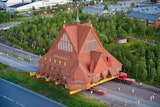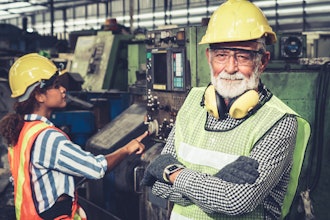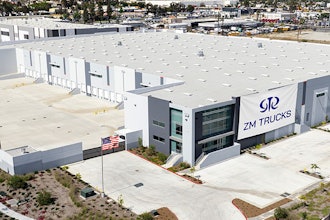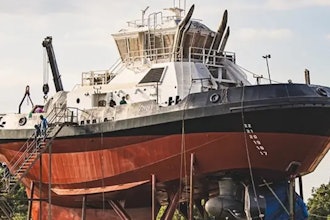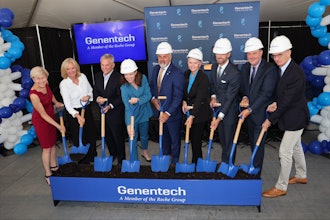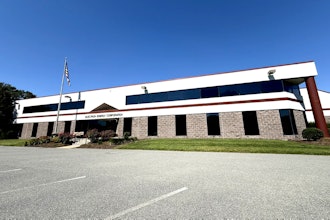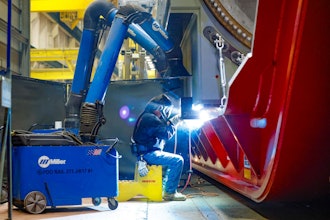
According to a model developed by Associated Builders and Contractors (ABC), the construction industry faces a shortage of over 400,000 workers in 2025 to meet the rapidly increasing demand for new projects. This deficit has stimulated a shift towards robotics and autonomy, redefining traditional construction practices to ensure safety, precision and overall efficiency.
Robotic and autonomous vehicle implementations in construction are becoming a modern-day solution to long-standing industry challenges. These innovative machines and automated systems are increasingly undertaking roles that ensure the thorough execution of complex construction tasks. From automated bricklaying and welding, to hauling and general transportation tasks, these technologies are becoming pivotal in managing complex construction activities that human workers are either too scarce to fill or are too dangerous to undertake.
Implementing robotics in construction relies heavily on the accuracy and reliability of the utilized autonomous systems. Robotics in construction relies on advanced navigation systems, real-time data analytics and machine learning algorithms which are fundamental in boosting productivity and ensuring the accurate execution of various construction tasks.
Some challenges with integrating robotics into the construction ecosystem include maintaining precision, accuracy and continuity in dynamic and challenging environments. Traditional GPS systems may falter or lose signal due to obstructions like buildings or trees, which may lead to inaccuracies in positioning and orientation. Construction robotics must also operate reliably under an array of environmental conditions such as heat, cold, dust, mud, absence of light and course-challenging weather conditions. These factors can disrupt electronic sensors and signals, preventing heavy machinery and robotic systems from functioning accurately. Auxiliary and reliable technologies for navigation are, therefore, essential to combat these obstacles.
Some of the critical technologies at the forefront of innovation in robotics, vehicles and heavy machinery within the construction industry are the integration of Inertial Measurement Units (IMU) and Inertial Navigation Systems (INS) using optical gyroscopes. For example, ANELLO Photonics has embedded its cutting-edge silicon photonics optical gyroscope (SiPhOGTM) technology into various product solutions to enable reliable and robust navigation and positioning for autonomous vehicles operating in challenging construction environments. These ANELLO solutions enhance accuracy and reliability for navigation and positioning in environments where GPS signals are weak, unavailable or jammed.
 ANELLO Photonics has embedded its silicon photonics optical gyroscope (SiPhOG) technology into various product solutions to enable reliable and robust navigation and positioning for autonomous vehicles operating in construction environments.ANELLO Photonics
ANELLO Photonics has embedded its silicon photonics optical gyroscope (SiPhOG) technology into various product solutions to enable reliable and robust navigation and positioning for autonomous vehicles operating in construction environments.ANELLO Photonics
The ANELLO IMU+ was designed for robotics and construction applications and is a fault-torrent inertial navigation sensor with optical gyroscope technology and long-term GNSS-denied dead reckoning capabilities. High-precision measurements with unaided heading drift of < 0.5°/hr, enable accurate positioning and navigation with poor or no GPS signal, such as indoor construction sites. The fault-tolerant design with triple redundant sensors, ensures continued and reliable operation of the ANELLO IMU+ in challenging conditions without GPS. These features make the ANELLO IMU+ particularly well-suited for construction robots operating in challenging and harsh environments where reliable navigation and positioning are crucial for efficient and safe operations.
 The ANELLO IMU+ was designed for robotics and construction applications and is a fault-torrent inertial navigation sensor with optical gyroscope technology and long-term GNSS-denied dead reckoning capabilities.ANELLO Photonics
The ANELLO IMU+ was designed for robotics and construction applications and is a fault-torrent inertial navigation sensor with optical gyroscope technology and long-term GNSS-denied dead reckoning capabilities.ANELLO Photonics
The company also offers an additional solution for construction vehicles operating long-term in GNSS-denied environments. The ANELLO GNSS INS enables reliable navigation and localization for autonomous construction vehicles and ensures robust performance in harsh conditions, including resistance to shock, vibration, dust and chemicals commonly found in construction environments This high-accuracy solution enables high accuracy for heavy autonomous machinery such as those used for grading, excavation and material handling. By integrating the ANELLO GNSS INS, autonomous construction vehicles can perform complex tasks with improved efficiencies, while enhancing overall safety on the construction site in challenging GPS-denied environments.
 The ANELLO GNSS INS enables reliable navigation and localization for autonomous construction vehicles.ANELLO Photonics
The ANELLO GNSS INS enables reliable navigation and localization for autonomous construction vehicles.ANELLO Photonics
The construction industry is poised for a significant transformation as robotics technology continues to evolve and gain wider acceptance. Innovations like ANELLO Photonics' SiPhOG inertial navigation systems are paving the way for more efficient and safer construction practices. These advancements are helping the sector address its labor shortages while improving safety standards and overall operational efficiency.
As robotics technology progresses, it will unlock new possibilities in construction, enabling faster project completion times and more cost-effective building processes. The future of construction lies in the seamless integration of robotic systems and human expertise, working in tandem to create the construction environments of tomorrow. This synergy between technology and human skills is set to redefine construction methodologies, ushering in a new era of precision, speed, efficiency and innovation in the industry.
For more information, visit: https://www.anellophotonics.com/.
